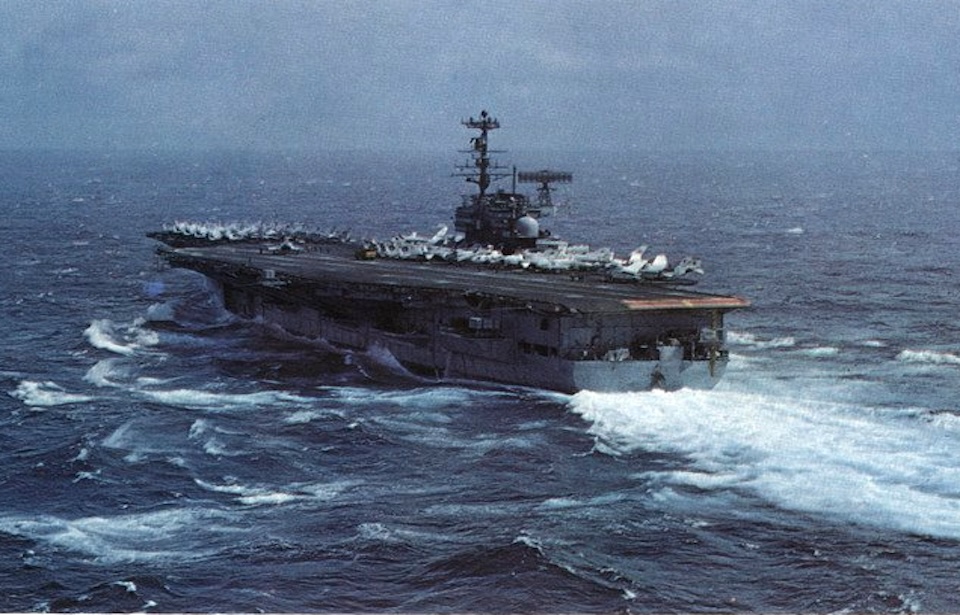The USS Forrestal (CV-59) served in the US Navy for nearly four decades, taking part in numerous combat operations. Yet, the most infamous chapter of her story was the devastating flight deck accident that took place in 1967, which resulted in heavy casualties and extensive damage to the vessel.
In the wake of this tragedy, a positive outcome emerged: the Navy quickly implemented training reforms in response to the event, with the intention to ensure that such a disaster would never happen again.
The USS Forrestal‘s early service in the Atlantic and Mediterranean
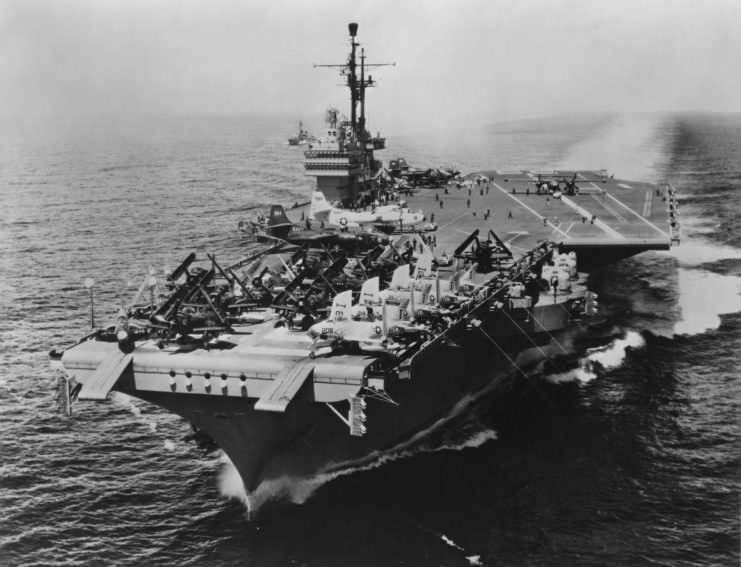
The USS Forrestal was the lead ship in her class of aircraft carriers and was commissioned on October 1, 1955.She was the first carrier specifically designed to operate jet aircraft, marking her as the Navy’s first “supercarrier.”
Forrestal began her service in the Atlantic Ocean during the Suez Crisis and was assigned to the Mediterranean with the US Sixth Fleet. Before being deployed to provide extra airpower during the Vietnam War, she was stationed off the coast of Beirut during the 1958 Lebanon crisis for three days.
In November 1963, Forrestal made history when a Lockheed C-130 Hercules executed 21 full-stop landings and takeoffs on her deck, establishing a record for the largest and heaviest aircraft to land on a carrier. The following year, US President Lyndon B. Johnson sent the vessel to Brazil to aid the successful military coup d’état against President João Goulart.
The explosion on that fateful day
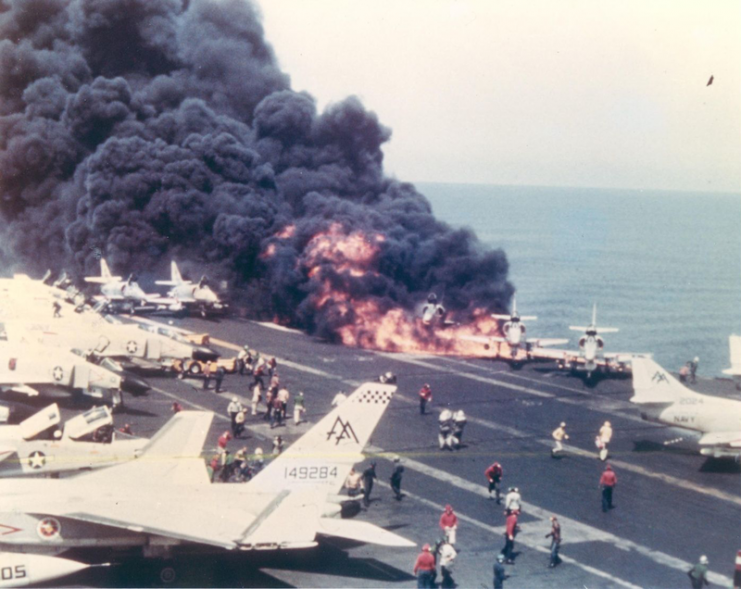
In June 1967, the USS Forrestal was positioned in the Gulf of Tonkin, near Vietnam’s northern coast in the South China Sea. During this time, aircraft from Attack Carrier Air Wing 17 (CVW-17) carried out numerous successful missions from the carrier, marking it as the Navy’s most intense air raid operation up to that point.
On July 29, 1967, an electrical malfunction aboard a McDonnell Douglas F-4B Phantom IIs on the Forrestal caused an Mk 32 “Zuni” Five-Inch Folding-Fin Aircraft Rocket (FFAR) to accidentally fire. It streaked across the deck and struck a parked, combat-ready Douglas A-4E Skyhawk, dislodging its 400-gallon external fuel tank. Senator John McCain was in the Skyhawk but managed to escape from the cockpit.
The collision ignited fuel from the A-4E, starting a fire that quickly spread. The initial explosion killed the first two firefighting teams trying to contain the blaze. Over the next five minutes, nine more explosions occurred following the rocket launch. The growing inferno eventually detonated a 1,000-pound AN-M65 bomb.
The losses onboard the USS Forrestal were devastating
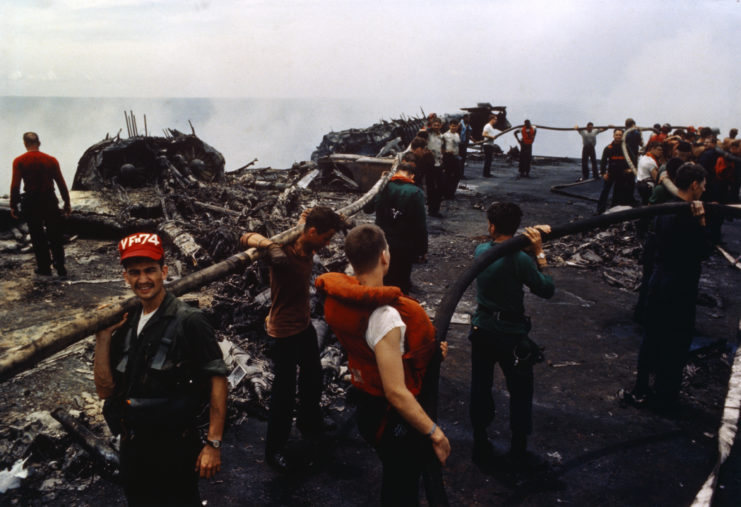
The determined efforts of the destroyers USS Rupertus (DD-851) and George K. MacKenzie (DD-836) were essential in eventually extinguishing the fire, revealing the full scale of the disaster. Many of the injured were evacuated to the hospital ship USS Repose (AH-16).
The catastrophe resulted in the deaths of 134 sailors and left hundreds more injured. Additionally, more than 20 aircraft, including F-4Bs, A-4Es, and North American RA-5C Vigilantes, were destroyed, causing damages to the carrier exceeding $70 million.
Fires at sea present a terrible dilemma for sailors: face the flames, be consumed by the blaze, or leap into the perilous waters. There is no safety. While some aboard the Forrestal survived the tragedy, others met a more brutal end. The explosions marked the deadliest event on a US Navy vessel since the Second World War.
The US Navy changed its training
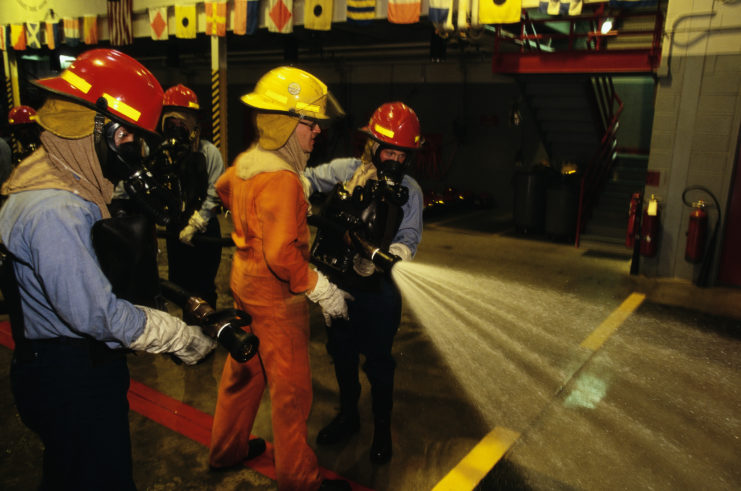
Following the incident, the Navy undertook a thorough review of its firefighting training protocols, uncovering a lenient atmosphere, inadequate firefighting expertise among sailors, and slow responses to unforeseen accidents.
The Aircraft Carrier Safety Review Panel, chaired by Rear Adm. Forsyth Massey, investigated the tragedy and concluded that “Poor and outdated doctrinal and technical documentation of ordnance and aircraft equipment and procedures, evident at all levels of command, was a contributing cause of the accidental rocket firing.”
As a result of the USS Forrestal events, the Navy initiated a comprehensive overhaul of its training programs, incorporating new guidelines and improvements. Despite the tragedy, the Navy gained crucial insights and established essential firefighting training for its sailors, which remains in effect today. The goal was to ensure such incidents would never occur again.
The USS Forrestal remained in service for several years after
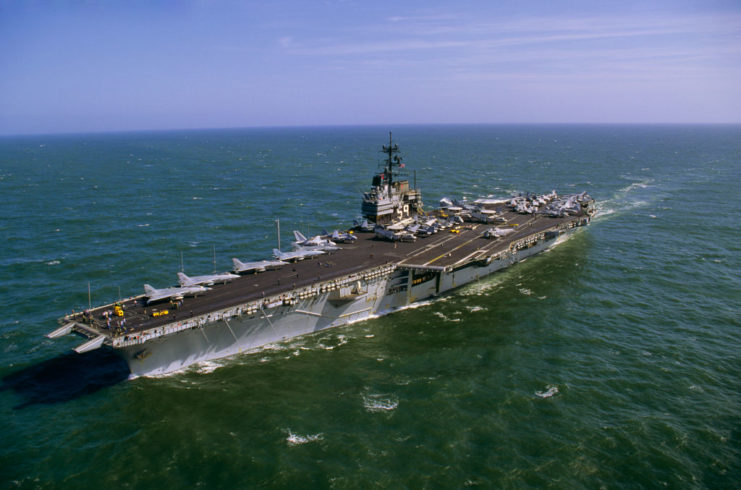
Surprisingly, the explosions on July 29, 1967, didn’t inflict enough damage to prevent the USS Forrestal from being repaired. Once cleared to return to duty, the aircraft carrier was deployed to the Mediterranean multiple times, participated in the 1981 Gulf of Sidra incident, took part in Operation Earnest Will in the Middle East and was placed on standby during the Gulf War.
After providing air support during Operation Provide Comfort in 1991, Forrestal transitioned into a training carrier and was re-designated AVT-59. In 1993, she was decommissioned. Twenty-three years later, in 2015, she was ultimately scrapped following unsuccessful efforts to convert her into a museum.
Are you a fan of all things ships and submarines? If so, subscribe to our Daily Warships newsletter!
Currently, a model of the vessel is exhibited in the “America’s War in Vietnam” section at the National Museum of the US Navy.
